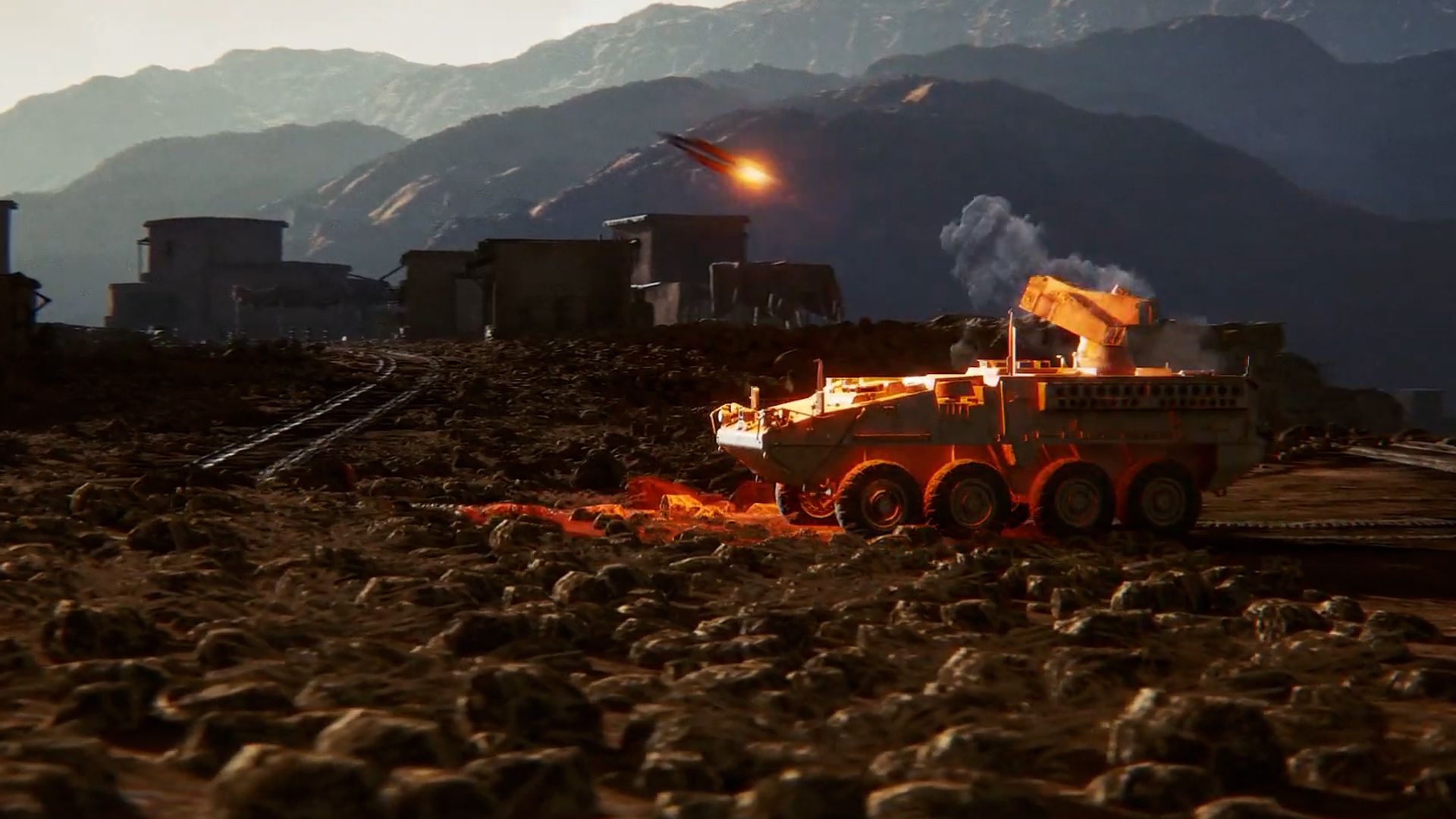
[Ryan Robertson]
UNMANNED AERIAL SYSTEMS ARE CAUSING A LOT OF HEADACHES ON MODERN BATTLEFIELDS, AND THEY WILL BE FOR SOME TIME.
THE PEOPLE’S REPUBLIC OF CHINA JUST ORDERED A MILLION LIGHT-WEIGHT KAMIKAZE DRONES TO BE DELIVERED BY 2026. SO, NATURALLY, DEVELOPING NEW WAYS TO COUNTER THOSE SYSTEMS IS A MAJOR PRIORITY FOR THE UNITED STATES.
Jimmy Jenkins: There’s a gap today in the kinetic missile front about the range we want to get after with stressing threats.
THAT’S JIMMY JENKINS, THE PRESIDENT AND GENERAL MANAGER FOR BLUEHALO’S ARMED FORCES PORTFOLIO. WE HAD THE CHANCE TO SPEAK WITH HIM AT THE AFA’S AIR, SPACE AND CYBER CONFERENCE LAST FALL.
BEFORE WORKING WITH BLUEHALO, HE WAS AN AIR-MISSILE DEFENDER IN THE ARMY FOR ALMOST 28 YEARS. SO, HE HAS SOME FIRST-HAND KNOWLEDGE IN THE FIELD.
JENKINS SAYS THE ARMY HAS OPTIONS WHEN IT COMES TO DOWNING ADVERSARIAL DRONES, BUT THE SERVICE ISN’T USING ANYTHING TAILOR-MADE FOR GROUP 3 SYSTEMS WHICH COULD LEAD TO USING MULTI-MILLION DOLLAR MISSILES TO TAKE OUT A DRONE VALUED IN THE THOUSANDS.
GROUP 3 SYSTEMS ARE THOSE THAT ARE BIGGER THAN THE FPV AND QUADCOPTER STYLES BUT SMALLER THAN SAY, AN MQ-9 REAPER.
MANY, IF NOT MOST, OF THE KAMIKAZE DRONES CHINA ORDERED ARE GROUP 3s.
JENKINS PUTS IT BLUNTLY:
The nation’s got to fill that gap. This missile is that gap,
THE GAP FILLER IS BLUEHALO’S FREEDOM EAGLE-1, THE COMPANY’S ANSWER TO THE ARMY’S ASK OF A NEXT GENERATION MISSILE.
Jenkins: This will go out past 20 kilometers. It’ll go over 10,000 feet in elevation. It will fire off network data. So, it does not have to be tied to a specific radar, and it’s a modular, open system. So, many of the components will be used for other types of missiles. And a lot of the IP, the government already owns because we’re taking advantage of the millions of dollars they’ve spent in secret development and avionics, and incorporating that in this missile.
A NEW WEAPON AND CAPABILITY MOSTLY BUILT OFF TECH ALREADY IN USE PROVED TO BE A WINNING COMBINATION FOR BLUEHALO.
THE FREEDOM EAGLE WAS CHOSEN LAST YEAR AS ONE OF TWO OPTIONS THE ARMY WILL PURSUE FOR ITS COUNTER UAS ARSENAL.
AND CONGRESS IS KEEN ON DEVELOPING THOSE OPTIONS QUICKLY, WHICH IS WHY THE 2025 NATIONAL DEFENSE AUTHORIZATION ACT INCLUDED A $20 MILLION PROVISION TO ACCELERATE COUNTER-UAS RESEARCH AND DEVELOPMENT.
Moneymaker: I think it’s a tremendous movement in allocating additional funds to meet kind of the highest priority threats and the associated technologies to mitigate those threats that we’re seeing on the horizon.
THAT’ BLUEHALO’S CEO, JONATHAN MONEYMAKER AND YES, THAT’S HIS REAL NAME. HE SAYS BLUEHALO BUILT ON THE KNOWLEDGE AND SKILLS IT ALREADY HAD IN THE COUNTER-UAS ARENA TO DEVELOP FREEDOM EAGLE
Moneymaker: This is, I think, an example of where our customers have kind of recognized, I think, the unique spot that BlueHalo has grown into over the years. Which we kind of describe as the ‘Goldilocks’ between a heritage of know-how, of fundamentally understanding what it takes to field and operate these next generation capabilities, and really that kind of disruptive innovation mindset and DNA that we look at solving problems through.
WHILE THE FREEDOM EAGLE WAS DOWNSELECTED BY THE ARMY, MONEYMAKER SAYS ITS COMPONENTS, AND THE MISSILE ITSELF, MAY ALSO BE SUITABLE FOR OTHER SERVICE BRANCHES. THREATS PRESENTED BY UAS AREN’T LIMITED TO THE ARMY, AFTERALL. ALSO, MONEYMAKER SAYS THE MISSILE IS HIGHLY SCALEABLE. MEANING IT’S READY TO GO INTO HEAVY ENOUGH PRODUCTION TO COUNTER THE MILLION KAMIKAZE DRONES CHINA JUST ORDERED.
OF COURSE, BLUEHALO GETTING ACQUIRED BY AEROVIRONMENT RECENTLY SHOULD ALSO HELP THE FREEDOM EAGLE REACH NEW HEIGHTS IN 2025.
FOR MORE UNBIASED, STRAIGHT FACT REPORTING LIKE THIS BE SURE TO CHECKOUT OUR ARCHIVES ON THE STRAIGHT ARROW NEWS APP OR AT SAN.COM.











